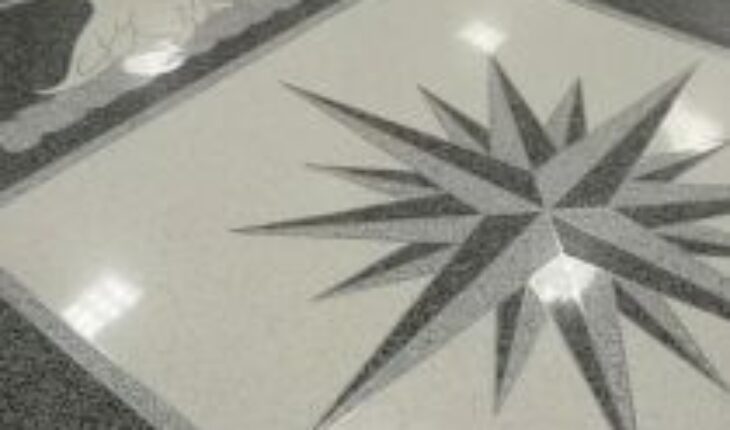It is perhaps the most unusual and exclusive museum in the world, full of artifacts that have shaped history. But its doors are firmly closed to the public.
It is the only place where a visitor can see the gun found with Osama bin Laden when he was killed, next to Saddam Hussein’s leather jacket.
Welcome to CIA internal museum, highly secret.
Located inside the headquarters of the US intelligence agency in Langley, Virginia, the collection has just been renovated for commemorate the agency’s 75th anniversary.
A small group of journalists, including the BBC, were given exclusive access, albeit with a security escort constantly by our side.
Among the 600 objects on display are the kinds of Cold War spy gadgets one might expect.
A ‘dead rat’ in which messages can be hidden, a hidden camera inside a pack of cigarettes, a pigeon with its own spy camera and even an explosive martini glass.
But there are also details about some of the CIA’s most famous and even recent operations.
This model was used to inform President Obama, who approved the raid on the building in which Osama bin Laden was located.
In the exhibit is a scale model of the enclosure in which Osama bin Laden was discovered in Pakistan.
President Obama was shown this scale model before approving the raid that killed the al-Qaeda leader in 2011.
“Being able to see things in 3D actually helped lawmakers as well as our operators. to plan the mission” explains Robert Z Byer, director of the museum who accompanied the journalists during the tour.
On July 30 of this year, an American missile hit another ground, this time in the Afghan capital, Kabul.
The goal was the al-Qaeda’s new leader, Ayman al-Zawahiri.
Al-Zawahiri was hit by a missile while on the balcony of this Kabul building.
And the most recent addition to the museum, recently declassified, is another scale model of the building used to brief President Biden on 1 July 2022 on the proposal for the mission.
Zawahiri was hit while on the balcony after the U.S. intelligence community spent months studying his movements.
“It reveals how the anti-terrorist agents observe the pattern of life of the target,” explains Byer.
The first half of the museum is organized in chronological order, from the founding of the CIA in 1947 to the Cold War, with the attacks of 11 September 2001 as a clear shift in the focus on the fight against terrorism.
There are even items on display donated by some of those who lost a family member or friend in the attack.
Many analysts considered Zawahiri, on the right in the photo, to be Osama bin Laden’s main man. After bin Laden’s death, he assumed the leadership of al-Qaeda.
Visitors to the museum are the CIA staff themselves, as well as official visitors.
But the museum doesn’t just focus on successful operations.
Also failures
There is a section on the Bay of Pigs fiasco when a CIA mission to overthrow Fidel Castro in Cuba went disastrously wrong.
There are also references to failure in the search for weapons of mass destruction in Iraq.
“This museum is not just a museum for the sake of history. It is an operational museum. We bring CIA officers here to explore our history, both good and bad,” Byer says.
“We make sure our officers understand our history, so they can do a better job in the future. We have to learn from our successes and failures to improve“.
The model of the sunken K-129 submarine was created by the CIA during the AZORIAN mission, and had never been exhibited before.
However, some of the most controversial aspects of the CIA’s work are less visible, for example, its 1953 joint operation with MI6, to overthrow a democratically elected government in Iran
Or its most recent involvement in the torture of terrorism suspects after 2001.
‘We can neither confirm nor deny’
The second half of the The museum focuses in detail on some specific operations.
The phrase “we cannot confirm or deny” is quite familiar to those who report on intelligence agencies and its origin lies in a specific history of the museum that collects elements never seen before.
In the late 1960s, a submarine of the Soviet Union was lost somewhere on the ocean floor.
After the U.S. located him, the CIA worked with billionaire Howard Hughes to try to recover the wreck and technology on board.
Several of the objects, such as the work monkeys and the flag, are examples of the realistic detail the CIA and Hughes fabricated for the expedition. They have never been shown before
To carry it out, a cover story in which Hughes was supposed to mine the ocean floor using a ship called Glomar Explorer.
The museum contains a model of the Soviet submarine, as well as clothes, ashtrays and mail bags created to maintain the cover story of the Glomar.
Even on display is a wig worn by the CIA deputy director to disguise himself during a visit to the ship.
Material still classified
The mission was only partially successful because the submarine broke when the Glomar’s steel claws tried to pull it out, although some parts were recovered.
“Most of what they found aboard that submarine is still classified,” Byer says.
Poster of a fake movie called Argo.
When news broke of what was known as Project Azorian before the rest of the submarine could be extracted, officials were told to say they “could not confirm or deny” what had happened.
A phrase known as “Glomar Response” and is still widely used.
Fake movie
There are also elements used to construct the poster story of a fake movie called Argo.
This would allow the rescue of diplomats held in Iran after the 1979 revolution, a story that later became a Hollywood movie.
On display is the concept art of the fake movie the rescue team pretended to be making.
Art was designed to be deliberately difficult to decipher or comprehend.
The entrance to the CIA Museum introduces visitors to the general themes they can find in the exhibits: counterintelligence, partnerships, analysis, clandestine collection, and covert action.
And when it comes to deciphering, the roof of the new museum also contains messages hidden in different types of code.
The goal, CIA officials say, is that the images are shared with the public on social media to see if they can decipher them.
Some of the exhibits will also be available to view online.
But for the time being, that may be as close as most people can get to this museum.





